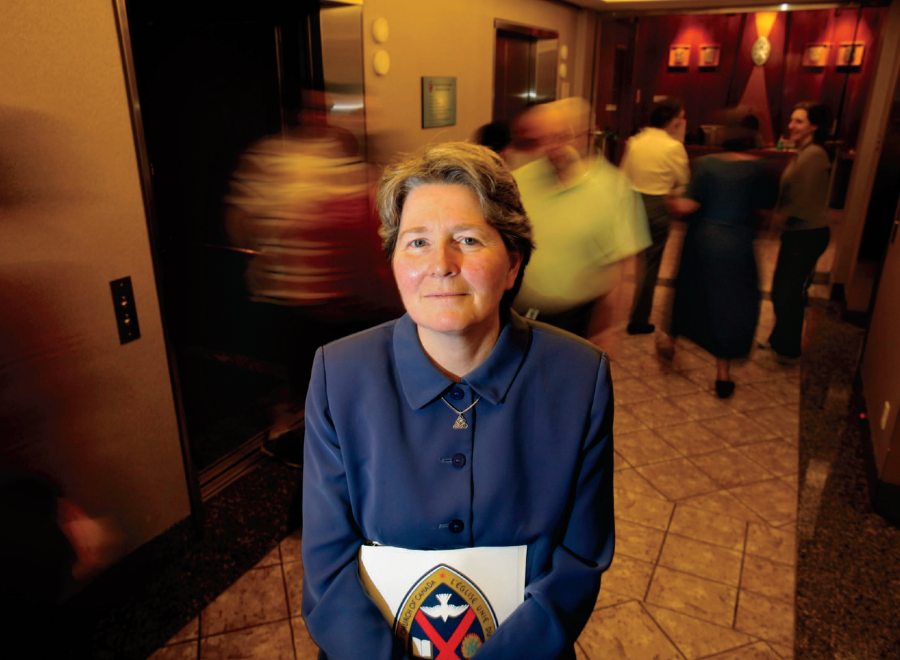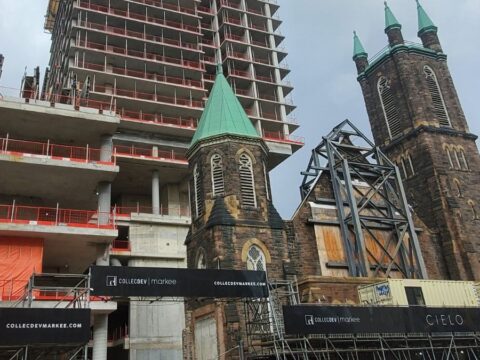With the 40th General Council looming in August, United Church decision-makers are facing some tough realities. Just two years after cutbacks eliminated 20 jobs and slashed $3.2 million from annual General Council budgets, current financial projections show more shortfalls and cutbacks on the horizon. As if to signal changes to come, General Council’s five-person senior leadership team was laid off in early April, replaced by two newly created senior positions. An administrative shuffle will eventually eliminate two more senior management positions. Further, two recent reports outline a litany of financial and faith challenges, setting the scene for frank discussions at the General Council meeting in Kelowna, B.C.
The “State of the Church” and “Called to Be Church” reports catalogue the church’s declines in membership, attendance, and Mission and Service Fund support, its struggles with aging clergy leadership, and its “longing for a unifying vision.”
You may unsubscribe from any of our newsletters at any time.
United Church general secretary Nora Sanders said in an interview that the two reports give commissioners “clear information” about the church’s circumstances, but “I don’t think it’s all doom and gloom. It’s so easy to focus on loss, but we’re still a wonderful, big, active church with many dreams, and we need to hang onto those dreams and expand them, because that’s what it means to be a church.”
On the financial front, however, more cutbacks in staff, programs and grants are coming soon. Meeting in Toronto in late March, the General Council Executive learned that preliminary financial plans for the church’s 2011 to 2013 budgets show a cumulative shortfall of $6.5 million.
As well as hearing warnings about the next round of budget cuts from finance committee chair Don Hunter, the Executive also learned the extent of lost earnings on church funds in 2008. In a year when Canadian stock markets dropped by about 34 percent, the church treasury funds lost 9.3 percent and its pension fund lost 9.4 percent. Though small in comparison to many other institutions, the church’s income losses compound budget pressures.
Hunter’s warnings about budget shortfalls will be communicated to General Council commissioners so the financial challenges can inform their decisions. Church leaders have been known to adopt costly new programs without indicating where corresponding cuts can be made. At its March meeting, for example, the Executive approved funding for the new $900,000-a-year Aboriginal Ministries Circle. The money will come from a bequest fund for the first two years, but must be phased into operating budgets in 2012.
The Executive also voted to send three additional corresponding members to General Council — to ensure visible minorities and deaf people are represented — despite the fact that meeting costs have already spiralled $300,000 over the usual $1 million in expenses. “We’re very good at raising up things that would be good to do,” said Don Hunter in an interview. “But we’re not so good about making choices. And with the costs, it’s difficult to be in that environment.”
A providential bequest could temper the need for more budget cuts, but the $20-million Morrison Bequest, received by General Council in 2000, will be down to $1.3 million by the end of 2013.
Recent leadership layoffs, approved during an in-camera session at the Executive’s March meeting, have been coming since 2007 when the elimination of 20 positions left staff management-heavy. Sanders, working with an outside management consultant and a small advisory group of volunteers, formulated the changes early this year.
The shakeup reflects one of the conclusions of the Redesign Evaluation Task Group report that was completed late last year and looks back on the problematic General Council staff restructuring completed in 2002. The task group reported hearing that “power is too centralized” in the senior leadership team, and this got in the way of “creating a working environment characterized by trust, mutual respect and the ability to value the worth and contributions of each program and staff member.”
Five senior positions reporting to the general secretary were eliminated as of May 1, but two of the affected staff will fill the newly created positions. Rev. Bruce Gregersen, who formerly oversaw programs for mission and ministry, is now General Council officer for programs (including global work, stewardship, resource production and congregational ministry). Rev. Carol Hancock, former minister for regional relations, will now oversee conciliar relations (including governance and relations with other church courts).
Both report to the general secretary.
The three remaining senior leaders — former planning processes minister Janet McDonald, former resources for mission and ministry minister Ian Fraser and former minister for racial justice and gender justice Kim Uyede-Kai — will receive termination packages.
Another shuffle approved by the Executive consolidates three General Council units —intercultural, French, and congregational and community ministries — into one. Rev. Michael Blair, currently executive minister for the intercultural unit, will lead the new consolidated unit, while current executive ministers Rev. Pierre Goldberger and Rev. Harry Oussoren will work with him until they retire. Their positions may be recategorized thereafter.
Rev. Brian McIntosh of Toronto, spokesperson for the United for Justice network formed to protest the 2007 budget cuts and layoffs that hit the church’s social justice unit particularly hard, says the shakeup is likely “a good move that offers, I hope, some dispersion of power to program staff and General Council’s executive ministers.” He also hopes that the five high-level salaries cut in the changes — averaging about $100,000 each — will help ease budget pressures.
There will be some cost savings, says General Council’s head of human resources Michael Burke, but reducing the ranks of management was the main goal. Creation of two non-management positions — one in the new inter-cultural unit for racial justice and gender justice and the other for planning processes, reporting to Hancock — leave a net loss of only one staff position.
The draft eight-page “State of the Church” report — adopted by the Executive and aimed at General Council commissioners and “everyone who cares about the United Church” — gives a big-picture summary of bad news and good news on church finance, membership, demographics, leadership and theology.
In the past 20 years, for example, the number of congregations declined 20 percent, but the value of congregations’ property and investments rose 219 percent. Givers to the Mission and Service Fund are down by 50 percent since 1987, but average donations are up 90 percent (before inflation) to $226 per person. The M&S Fund has received about $30 million a year since the mid-1980s, but in the same time, inflation has reduced purchasing power by about 40 percent. The number of people attending weekly worship is down 48 percent to 204,444, but 2.8 million Canadians still identify the United Church as their denomination.
On faith, the report raises “perhaps the most significant theological issue today,” asking, “What role does theology play in a church that does not require subscription to its theological statements?”
Its companion, the nine-page “Called to Be Church” report, encourages discernment of a “unifying vision.” Along with feedback from across the church, the report is being used to shape what will be discussed at General Council’s plenary sessions.
Written by a six-member task group, “Called to Be Church” was a response to a consultant’s report last year that gave a $200-million church fundraising campaign the thumbs-down. The consultant said the church was riddled with distrust and lacked a clear identity and purpose.
The report outlines the church’s history and its theological articulations — from the 1925 Basis of Union to the 2006 Song of Faith and more recent documents outlining a common purpose and vision.
Listing aging ministry personnel, dwindling membership and falling financial resources as specific challenges, the report asks, “How do we name our vision of living God’s mission as The United Church of Canada steps into the future?”
Coming up with that vision, says Hunter, could let General Council reconsider a major fundraising campaign. McIntosh, though, hopes decision-making at General Council goes well beyond solving financing challenges.
“The church is going to have to make some hard decisions about the kind of Body of Christ we want to be,” he says. “Those of us who are working on the social justice side of things want to see more commitment to the mission of the church and less to the maintenance of the church. This is a pivotal General Council.”
***
This story first appeared in The United Church Observer’s June 2009 issue with the title “Facing up to the future.”














